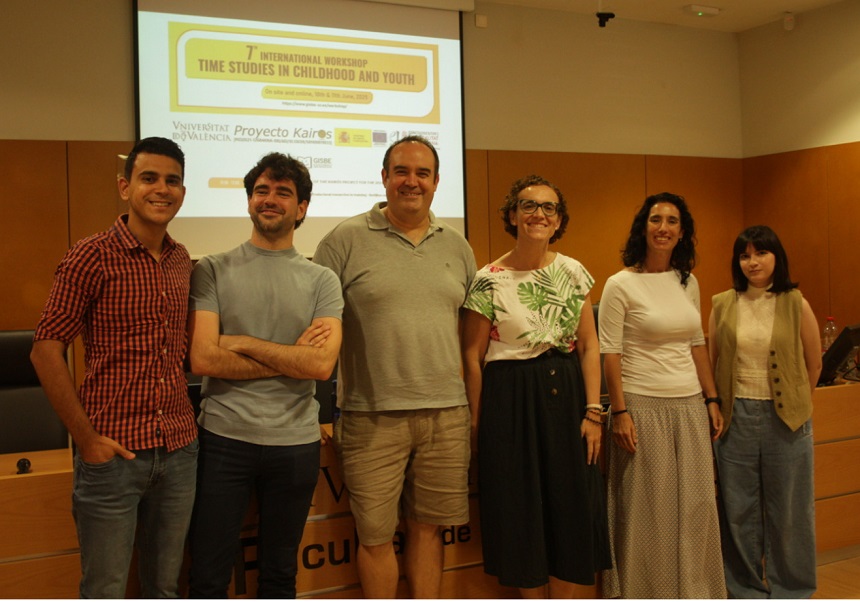Worms found to have a mechanism that ‘remembers’ the immune response to a virus to defend against reinfection

A study carried out at the Institute for Integrative Systems Biology (I2SysBio), a joint centre of the Spanish National Research Council (CSIC) and the University of Valencia (UV), shows that the Orsay virus, which naturally infects the nematode (roundworm) Caenorhabditis elegans, establishes latent infections that remain dormant and can reactivate during different stages of the animal’s life. The findings, published in Nature Communications, reveal how these initial infections generate an immune memory that enables the organism to protect itself against reinfection, even when the new infections are caused by different strains of the virus.
Orsay is an RNA virus that, despite its similarities to other pathogens such as those responsible for avian flu or COVID-19, does not affect humans. Its only known host is the nematode Caenorhabditis elegans. This worm is widely used as an experimental model in research because of its genetic similarity to humans, with whom it shares more than 80% of its proteins. Using this model, the research team conducted a study to understand the mechanisms of viral persistence, reactivation and immune response of C. elegans to its natural parasite.
The work, led by I2SysBio researcher Santiago F. Elena, shows that the animal’s immune response to the virus depends on a mechanism called RNA interference. This system, which is key to the antiviral defence of this type of nematode, involves the degradation of messenger RNA (mRNA), the molecule that carries genetic information for the synthesis of new proteins. This degradation process allows genes to be specifically ‘switched off’, thus preventing the genetic message from being translated into a protein. Analysis of this mechanism showed that previously infected animals were able to suppress viral replication after a second exposure, suggesting an induced immune response.
The study also points out that this immune response is regulated through two pathways. On the one hand, through a generalised reprogramming of the transcriptome — the set of all mRNA molecules in each cell. This reprogramming changes the amounts of mRNA, thereby altering the structure, metabolism and function of the cells. On the other hand, it is mediated by alterations in the landscape of small RNAs, which are not messenger RNAs but have a regulatory function in stress situations such as viral infections. “When we talk about these alterations, we are referring to any change in small non-coding RNAs, that is, short molecules that are not translated into proteins but play a crucial role in regulating gene expression”, explains Santiago F. Elena.
Immune response declines with age
In 2024, I2SysBio (CSIC-UV) had already described the response of the nematode C. elegans to a chronic Orsay virus infection from birth to sexual maturity, at the highest resolution achieved to date. Now, the new study not only demonstrates how the animal ‘remembers’ the immune response to the virus in order to combat new infections, even from different strains, but also confirms that the intensity of this acquired response decreases with age.
This phenomenon of cross-protection is explained by the action of RNA interference. This mechanism works by generating small interfering RNAs (siRNAs) from the genome of the first infecting virus. These are then amplified by a complex cellular machinery and used as guides to block the gene expression of a later infecting virus that is genetically related to the first. This form of immunity, ancestral in evolutionary terms, is present in both plants and animals.
The study further suggests that competition for cellular resources and machinery between RNA molecules produced by the organism itself (endogenous) and those introduced by the virus during infection may modulate the effectiveness of the RNA interference (RNAi) mechanism, on which the immune response of C. elegans depends. This conclusion opens new avenues for exploring how viruses interfere with host defence mechanisms.
Reference: Castiglioni, V.G., Villena-Giménez, A., Herek, D., González-Sánchez, A., Toft, C., Gómez, G.G., Elena, S.F., Latent infection of Caenorhabditis elegans by Orsay virus induces age-dependent immunity and cross-protection. Nature Communications. DOI: https://doi.org/10.1038/s41467-025-62522-2
Categories: Investigació a la UV , Institut de Biologia Integrativa de Sistemes (I2SYSBIO) , Internacionalització recerca , Difusió i comunicació científica , Cultura Científica , Grups de recerca , Recerca, innovació i transferència
















